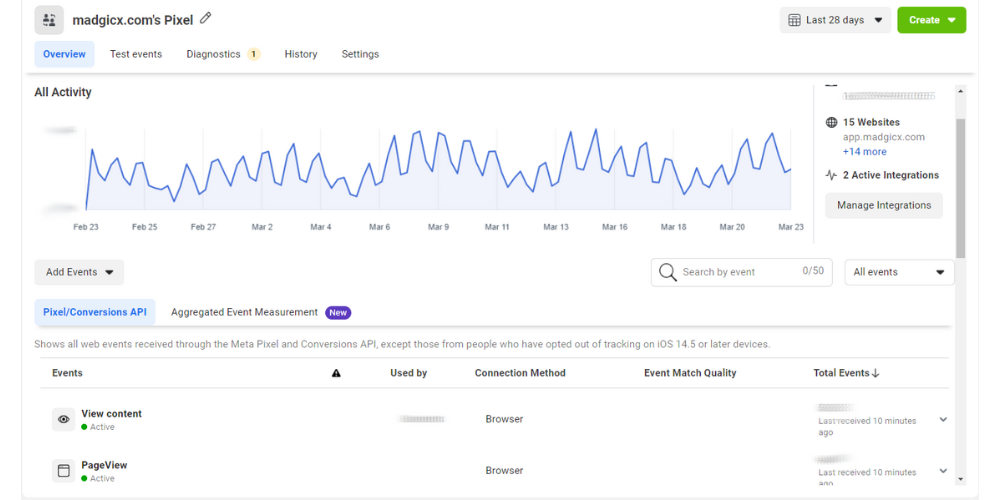How to Create Successful Organic Marketing Campaigns On Social Media
It’s a cold, vast, and increasingly fragmented social media landscape out there. How can you ensure your posts effectively reach your target audience and meet your campaign goals? The answer often lies in finding the right organic marketing strategy for your brand. By doing so, your brand’s online presence can truly blossom, driving increased engagement and achieving your desired results.
First Things First: What Is Organic Marketing?
In short, organic marketing is the opposite of paid marketing. It includes all forms of marketing that generate traffic to your website naturally, without requiring payment for ad space or exposure. Because it is low-cost and builds familiarity among your audience, it is significant in helping your organization achieve long-term online success. In particular, social media is a key part of organic marketing strategy as it provides ample opportunity to build awareness and gain trust with your audience.
So how do you create impactful social media marketing campaigns? Our experts at WE INC. Marketing recommend the following plan to boost organic social media content across your platforms.
Step 1. Set A Clear Goal For Your Social Media Campaign
What exactly do you want to achieve with this campaign in particular? Answering this question should tell you which posts to put your money behind and how to design them to meet your goal. For example, do you want viewers to buy tickets for your organization’s upcoming event? Design a post with a clear call-to-action and a short, branded URL. Do you want to increase general audience engagement and/or awareness? Consider an interactive element like a poll or quiz. Common examples of social media goals include:
Increased post engagement (ex. likes, comments, reshares, etc.)
Audience/follower growth
External link clicks (ex. ticket sales, email sign-ups, registration, etc.)
Once you have clearly defined your objective, it is easier to determine who your target audience is and how best to reach them.
Step 2. Identify Your Target Audience
When we ask clients who their target audience is, some of us wish we had a buzzer when the client says, “everyone is our target audience!” No. That is not possible. Ask the harder questions to dig deeper: Who specifically do you want to view and interact with your content? Your goal from Step 1 should help you further define who your audience is. In this case, be precise about the details, right down to their location and interests.
Though it’s not technically organic, paid ad campaigns can enable you to create your own custom audience. This custom audience feature, available on nearly all major social media platforms (Instagram, Facebook, LinkedIn, X, etc.), targets specific groups of people most likely to interact with your content. By uploading your email list or retargeting past website visitors, you can ensure your posts and paid ads reach the people most interested in your services without wasting money on ads that reach too broad an audience.
Making sure you have the Meta Pixel installed is another fantastic tool for paid ad campaigns on Facebook and Instagram. This small piece of code is placed on your website and provides insights about how your website traffic is impacted by your Facebook and Instagram ads. For example, it tracks when a customer clicks a Facebook ad to purchase something on your website, and it gives you the option to retarget this customer through future ads. Combined with Meta’s Conversions API, it can measure the overall results of your Meta ad campaigns and inform future marketing and paid advertising decisions.
Step 3. Pick The Right Social Media Posts
What would make an engaging post given your goals and audience? The answer typically lies in your past successes. In other words, which of your previous posts have resulted in the most likes, shares, link clicks, or ticket sales? This type of content evidently resonates with your audience and already has traction within your organization’s online community. If it ain’t broke, don’t fix it!
In analyzing your content, it’s important to focus on meeting your goal from Step 1 rather than just gaining online popularity. Nicolette Yarbrough, social media consultant at WE INC. Marketing, says:
"Good organic strategy isn’t about going viral—and going viral isn’t always the win it seems. Sometimes your most impactful content will be the quiet kind—the post that sparks conversation, builds connection, or inspires someone to show up to your event. Crafting content with intention, listening to what lands, and staying consistent will build an engaged and loyal following over time."
—Nicolette Yarbrough, Social Media Consultant @ WE INC. Marketing
To meet more specific goals for your campaign, such as gathering donations or expanding your email list, make sure your post has a clear call-to-action. Content that is tied to one obvious, simple action is easy for your audience to digest and act upon, increasing its chances of success.
Read more about how WE INC. Marketing’s social media team picked the right posts for the California Symphony’s Brahms Obsessions campaign, helping exceed ticket sales goals through organic social media marketing and paid ads.
Step 4. Start Small And Test Your Marketing Strategy
How does your campaign perform over the first week or so? Does anything need to change? A great initial plan is to boost your content for 5–7 days, with a minimal budget of, say, $10–$20 per day, and track its performance. Though it can seem easier to just “set it and forget it,” it is important to pay attention to how your content fares during this trial period. If necessary, make minor adjustments to specific areas based on engagement data. See which posts work in terms of clicks and engagement and scale your future boosts accordingly. The social media landscape is fast-changing, which requires social media marketers to be fast-learning and open to strategic shifts.
Final Thoughts: Boost What’s Working, Not What’s Not
No one knows your audience better than your audience. The best way to ensure your campaign’s effectiveness is to continually monitor how your content performs within your organization’s online community and make changes as necessary to meet your goals. Though the trial-and-error may seem frustrating, clear patterns will emerge from it to help you further refine your social media marketing strategy and see more organic marketing success.
Need more information or help? Expert consultants at WE INC. Marketing are happy to discuss your latest social media marketing questions. Drop us a line at hello@weincmarketing.com or 415.360.2144.




